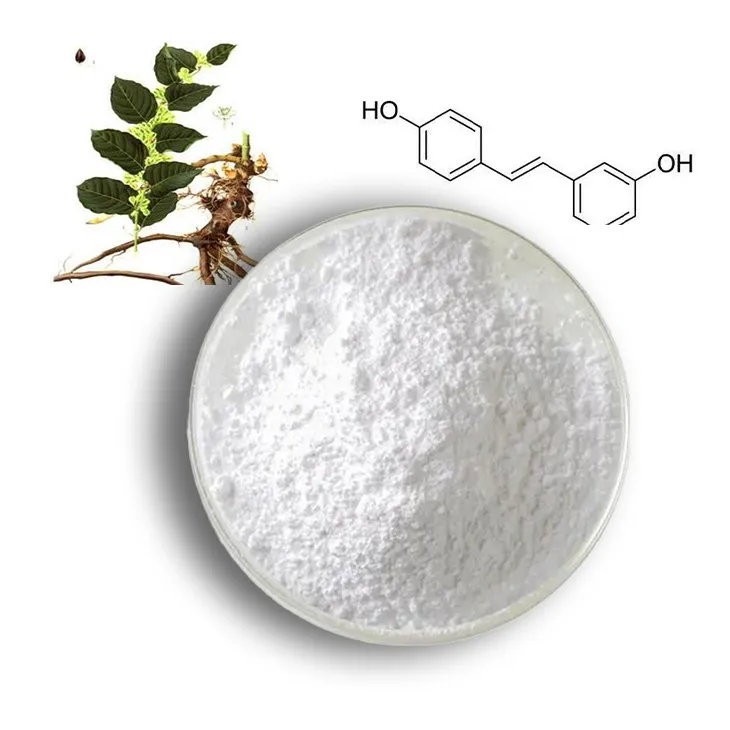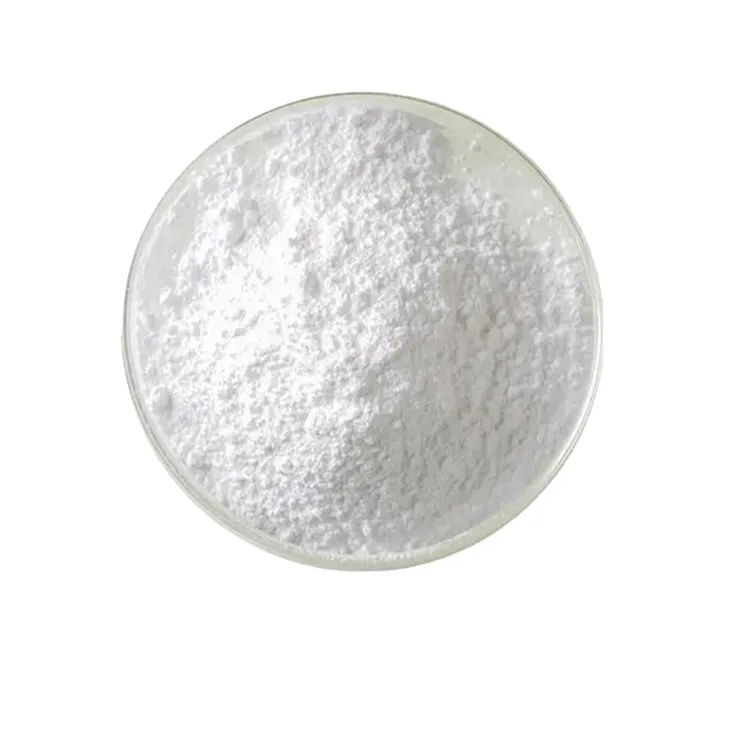- 0086-571-85302990
- sales@greenskybio.com
Optimal Bioavailability of Resveratrol Extract.
2024-11-30

1. Introduction
White Resveratrol extract has emerged as a compound of great interest in the field of health and nutrition. Resveratrol, a natural polyphenol, is found in various plants, with grapes and their by - products being a notable source. It has been associated with a wide range of potential health benefits, including antioxidant, anti - inflammatory, and anti - aging properties. However, the bioavailability of resveratrol is a crucial factor that can limit its effectiveness in vivo. Bioavailability refers to the proportion of a drug or substance that enters the circulation and is able to have an active effect. In the case of resveratrol, achieving optimal bioavailability is essential for realizing its full potential in promoting human health.

2. Factors Affecting Resveratrol Bioavailability
2.1. Chemical Structure and Solubility
Resveratrol has a relatively complex chemical structure that can influence its solubility and absorption. It is a lipophilic compound, which means it has a greater affinity for lipids. However, its poor water solubility can pose challenges for absorption in the aqueous environment of the gastrointestinal tract. Low solubility can lead to limited dissolution and subsequent absorption. Different forms of Resveratrol extract, such as trans - resveratrol and cis - resveratrol, may also have varying solubilities and bioavailabilities. Trans - resveratrol is the more stable and biologically active form, but its absorption can still be restricted by its chemical properties.
2.2. Metabolism in the Body
Once resveratrol is ingested, it undergoes extensive metabolism in the body. The liver and gut microbiota play significant roles in this process. In the liver, resveratrol is metabolized by enzymes such as cytochrome P450. These metabolic reactions can transform resveratrol into various metabolites, some of which may have different biological activities compared to the parent compound. The gut microbiota can also metabolize resveratrol, and the composition of the gut microbiota can vary among individuals. This variability in gut microbiota - mediated metabolism can lead to differences in resveratrol bioavailability. For example, certain bacteria in the gut may be able to convert resveratrol into more bioavailable forms, while others may degrade it, reducing its overall availability.
2.3. Interaction with Food and Other Substances
- Food matrix can have a significant impact on resveratrol bioavailability. When resveratrol is consumed as part of a whole food, such as grapes or red wine, the other components in the food can either enhance or inhibit its absorption. For instance, the presence of fats in food can increase the absorption of resveratrol, as it is lipophilic. However, dietary fiber may bind to resveratrol, reducing its availability for absorption.
- Interactions with other substances, such as drugs or supplements, are also important considerations. Some medications may interfere with the metabolism or absorption of resveratrol. For example, drugs that affect cytochrome P450 enzymes may alter the way resveratrol is metabolized in the body. Similarly, certain supplements may interact with resveratrol, either enhancing or diminishing its bioavailability.

3. Formulation for Improved Bioavailability
3.1. Nanoparticle - Based Formulations
Nanotechnology has been explored as a means to improve the bioavailability of resveratrol. Nanoparticle - based formulations can enhance the solubility and stability of resveratrol. Nanoparticles can be designed to protect resveratrol from degradation in the gastrointestinal tract and improve its cellular uptake. For example, polymeric nanoparticles can encapsulate resveratrol, allowing for controlled release and better absorption. Lipid - based nanoparticles, such as liposomes, can also be used. Liposomes mimic the cell membrane structure and can effectively deliver resveratrol into cells, increasing its bioavailability.
3.2. Complexation with Cyclodextrins
Cyclodextrins are cyclic oligosaccharides that can form inclusion complexes with resveratrol. This complexation can improve the solubility of resveratrol in water. By encapsulating resveratrol within the cyclodextrin cavity, the complex becomes more water - soluble, which can enhance its absorption. Different types of cyclodextrins, such as beta - cyclodextrin and hydroxypropyl - beta - cyclodextrin, have been studied for their ability to improve resveratrol bioavailability. The complexation with cyclodextrins can also protect resveratrol from enzymatic degradation, further contributing to increased bioavailability.
3.3. Prodrug Approach
The prodrug approach involves chemically modifying resveratrol to form a prodrug, which is then converted back to the active resveratrol in the body. This can be used to improve the pharmacokinetic properties of resveratrol. For example, esterification of resveratrol can increase its lipophilicity, which may enhance its absorption through the cell membranes. Once inside the body, the ester prodrug can be hydrolyzed back to resveratrol by esterases. This approach can also help in protecting resveratrol from premature metabolism, thus increasing its bioavailability.

4. Delivery Methods and Their Impact on Bioavailability
4.1. Oral Delivery
Oral delivery is the most common route for resveratrol consumption. However, as mentioned earlier, it faces challenges due to factors such as poor solubility and extensive metabolism in the gastrointestinal tract. To improve oral bioavailability, various strategies can be employed in addition to formulation. For example, taking resveratrol with a meal that contains fats can enhance absorption. Also, the use of enteric - coated tablets can protect resveratrol from the acidic environment of the stomach, allowing it to be released in the more alkaline intestine, where absorption may be more favorable.
4.2. Transdermal Delivery
Transdermal delivery offers an alternative route for resveratrol administration. This method bypasses the gastrointestinal tract, thus avoiding the first - pass metabolism that occurs in the liver. Transdermal patches or gels containing resveratrol can be designed to deliver the compound directly into the bloodstream through the skin. However, the skin's barrier function can limit the amount of resveratrol that can be absorbed. To overcome this, penetration enhancers can be used. These substances can disrupt the skin's lipid barrier, allowing for increased resveratrol penetration and improved bioavailability.
4.3. Intravenous Delivery
Intravenous delivery provides the highest bioavailability as it directly injects resveratrol into the bloodstream. This method bypasses all the barriers associated with oral and transdermal delivery, such as solubility and skin permeability. However, it is an invasive method and is usually reserved for medical or research purposes. In addition, the formulation for intravenous delivery needs to be carefully designed to ensure the stability and safety of resveratrol in the bloodstream.

5. Physiological Processes and Resveratrol Bioavailability
5.1. Absorption in the Gastrointestinal Tract
The process of resveratrol absorption in the gastrointestinal tract is complex. Resveratrol needs to be dissolved in the gut lumen before it can be absorbed. As mentioned, its poor solubility can be a limiting factor. Once dissolved, it can be absorbed through passive diffusion or active transport mechanisms. The small intestine is the main site of absorption, but the large intestine may also play a role, especially considering the influence of gut microbiota on resveratrol metabolism. The integrity of the intestinal barrier can also affect resveratrol absorption. A damaged intestinal barrier may allow for increased paracellular absorption, but it can also lead to the leakage of resveratrol metabolites and potential systemic inflammation.
5.2. Distribution in the Body
After absorption, resveratrol is distributed throughout the body via the bloodstream. It has been shown to have a relatively wide distribution, reaching various organs and tissues. However, its distribution can be influenced by factors such as protein binding. Resveratrol can bind to plasma proteins, which can affect its free concentration in the blood and its ability to penetrate tissues. Additionally, the presence of specific transporters in different tissues can determine the uptake of resveratrol. For example, some tissues may have higher levels of transporters that can actively take up resveratrol, while others may have lower levels, resulting in differential distribution.
5.3. Excretion from the Body
Resveratrol and its metabolites are ultimately excreted from the body. The kidneys play a major role in this process, filtering resveratrol and its metabolites from the blood and excreting them in the urine. The liver can also excrete resveratrol via bile into the intestines. The rate of excretion can impact the overall bioavailability of resveratrol. If resveratrol is excreted too quickly, its effective concentration in the body may be reduced, limiting its potential health benefits. On the other hand, a slow excretion rate may lead to the accumulation of resveratrol or its metabolites, which may have implications for toxicity or adverse effects.
6. Future Perspectives
As research on resveratrol continues, there are several areas that hold promise for further improving its bioavailability. One area is the development of more advanced formulations. For example, the combination of different formulation techniques, such as nanoparticle - based and cyclodextrin - complexed formulations, may offer even greater improvements in bioavailability. Another area is personalized medicine. Given the influence of individual factors such as gut microbiota composition and genetic variation on resveratrol bioavailability, personalized approaches to resveratrol supplementation may be developed. This could involve tailoring the dosage, formulation, or delivery method based on an individual's specific characteristics. Additionally, more research is needed to fully understand the long - term effects of improved resveratrol bioavailability on human health. While resveratrol has shown potential in various pre - clinical and short - term clinical studies, its long - term efficacy and safety in humans with optimized bioavailability need to be further explored.
FAQ:
What are the main factors affecting the bioavailability of white Resveratrol extract?
The main factors include formulation, delivery methods, and its interaction with the body's physiological processes. Different formulations can have different dissolution rates and absorption characteristics. Delivery methods, such as oral, topical, or injection, also play a role. And how it interacts with the body's digestion, metabolism, and transport systems within the physiological processes can significantly impact its bioavailability.
How does the formulation influence the bioavailability of white resveratrol extract?
The formulation can affect solubility, stability, and release rate. For example, a well - designed nanoparticle formulation may increase solubility, protect the resveratrol from degradation, and control its release in the body, thus enhancing bioavailability. A formulation that combines resveratrol with certain carriers or excipients may also improve its absorption across biological membranes.
What are the common delivery methods for white resveratrol extract and how do they impact bioavailability?
Common delivery methods include oral ingestion, topical application, and injection (although injection is less common for resveratrol in general use). Oral ingestion is the most popular. However, resveratrol has low oral bioavailability due to factors like poor solubility and extensive first - pass metabolism. Topical application may be used for local effects, but its systemic bioavailability is usually limited. Injection can potentially provide high bioavailability, but it has issues such as invasiveness and potential side effects.
How does the body's physiological process interact with white resveratrol extract to affect bioavailability?
The body's digestive system can break down resveratrol, and its metabolism in the liver can transform it into different metabolites. The absorption across the intestinal mucosa is also a key step. If the resveratrol can be effectively absorbed and transported in the bloodstream without being rapidly metabolized or excreted, its bioavailability will be improved. Additionally, factors like the presence of certain enzymes in the body can either enhance or reduce its bioavailability.
Can diet or other substances influence the bioavailability of white resveratrol extract?
Yes, diet can influence it. For example, consuming foods high in fat along with resveratrol may increase its absorption as resveratrol is lipid - soluble. Some substances may also interact with resveratrol. For instance, certain drugs or supplements may either enhance or interfere with its absorption, metabolism, or transport in the body, thereby affecting its bioavailability.
Related literature
- Bioavailability of Resveratrol: A Review"
- "Optimizing Resveratrol Delivery for Enhanced Bioavailability"
- "Factors Affecting the Bioavailability of Resveratrol in Dietary Supplements"
- ▶ Hesperidin
- ▶ citrus bioflavonoids
- ▶ plant extract
- ▶ lycopene
- ▶ Diosmin
- ▶ Grape seed extract
- ▶ Sea buckthorn Juice Powder
- ▶ Beetroot powder
- ▶ Hops Extract
- ▶ Artichoke Extract
- ▶ Reishi mushroom extract
- ▶ Astaxanthin
- ▶ Green Tea Extract
- ▶ Curcumin Extract
- ▶ Horse Chestnut Extract
- ▶ Other Problems
- ▶ Boswellia Serrata Extract
- ▶ Resveratrol Extract
- ▶ Marigold Extract
- ▶ Grape Leaf Extract
- ▶ blog3
- ▶ Aminolevulinic acid
- ▶ Cranberry Extract
- ▶ Red Yeast Rice
- ▶ Red Wine Extract
-
Gynostemma pentaphyllum extract
2024-11-30
-
Mango flavored powder
2024-11-30
-
Avocado Extract Powder
2024-11-30
-
Curcuma Longa Extract
2024-11-30
-
melatonin extract
2024-11-30
-
Curcumin Extract
2024-11-30
-
Lemon Extract
2024-11-30
-
Shikone Extract
2024-11-30
-
Wheat Germ Extract
2024-11-30
-
Apricot Powder
2024-11-30





















